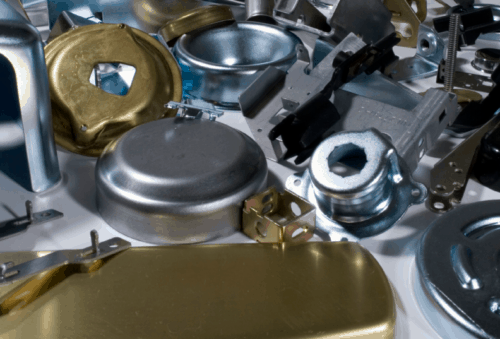Deep Drawing vs. Stamping for Metal Parts
Leave a CommentPrecision deep drawing and metal stamping are both highly common metalworking methods used to create a wide variety of products. But, what’s the difference between these two techniques? Here, we will outline the main differences between deep drawing vs stamping, guiding you through the benefits, drawbacks, and considerations of each process to help you identify the best option for your needs.
Choosing Between Deep Drawing and Metal Stamping for Your Application
When choosing the right metalworking technique for your application, it’s important to consider the following key factors:
- Part design and complexity
- Production volume requirements
- Material properties
- Cost/budget constraints
Once you’ve outlined the above parameters, you can then better identify whether your application will benefit more from deep drawing or metal stamping.
Deep Draw Stamping
Deep draw stamping uses a series of dies to incrementally and repeatedly stretch sheet metal into the desired shape. The result is a part with high dimensional accuracy and a smooth finish. Deep drawing is capable of producing complex and intricate shapes at high speeds with improved precision and efficiency. Because deep drawn parts undergo more pressure and stress during production, they often feature more durability compared to stamped products.
Advantages of Deep Drawing
- Capable of producing high volumes of quality products
- Ability to create complex designs
- Material flexibility
- Creates uniform wall thickness
Drawbacks of Deep Drawing
- Uses more expensive tooling than metal stamping
- Requires specialized equipment
- Not ideal for small production runs
Metal Stamping
Metal stamping is a high-speed process capable of quickly producing identical parts. This metalworking technique transforms flat sheet metal, referred to as blanks, into the desired shape by striking it with a die. Dies can be used to perform a wide variety of stamping operations, such as blanking, coining, bending, embossing, flanging, and piercing. Compared to deep drawn components, metal stamping parts are typically less accurate and have a rougher surface finish.
Advantages of Metal Stamping
- Ease of use
- High speed
- Can use a variety of metals to create a wide range of shapes and sizes
- Perfect for large-scale production
Drawbacks of Metal Stamping
- Produces more scrap
- Not ideal for highly complex or customized products
- Can be labor intensive
High-Quality Metal Deep Drawing & Stamping Services from Manor Tool
Whether you require deep draw stamping or metal stamping, Manor Tool & Manufacturing Company is here to help. Since 1959, we’ve been a full-service provider of superior metal stampings and metal fabrication in the Midwest. From our ISO 9001:2015-certified facility, we can provide deep draw and metal stamping services to suit both low- and high-volume production requirements for industries such as:
We leverage our decades of experience, advanced equipment, and expert staff to provide solutions tailored to your needs. We can also work with your existing dies to improve quality while maintaining competitive prices.
Ready to Discuss Your Metal Stamping Project? Contact Our Experts Today
When choosing between deep drawing vs stamping, it’s important to consider the unique needs of your application. Regardless of which method you require, Manor Tool has the skills, equipment, and expertise to deliver the ideal solution. For more information about our deep draw stamping and metal stamping capabilities, contact us today. You can also request a quote to get started.







